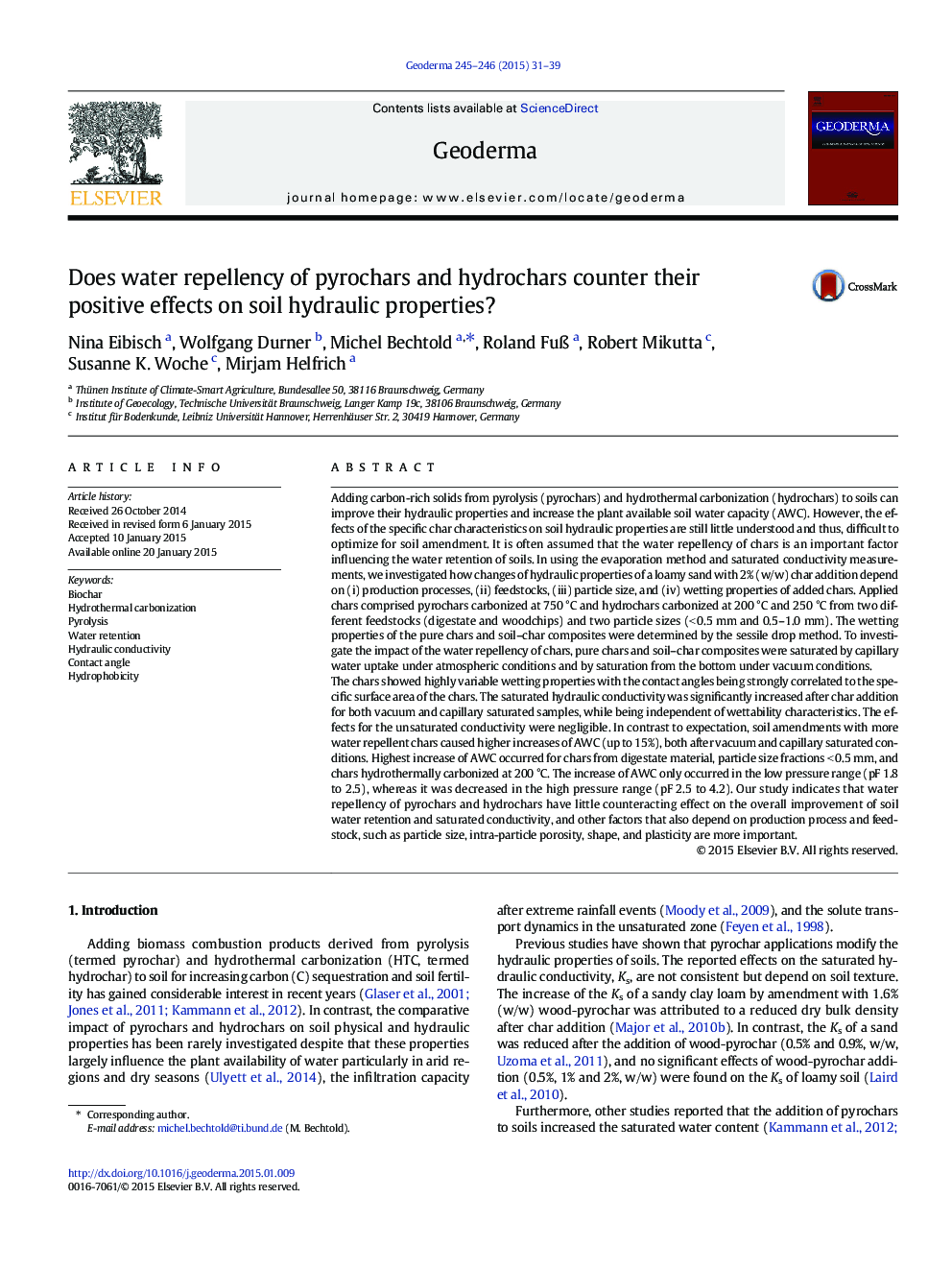| Article ID | Journal | Published Year | Pages | File Type |
|---|---|---|---|---|
| 4573185 | Geoderma | 2015 | 9 Pages |
Abstract
The chars showed highly variable wetting properties with the contact angles being strongly correlated to the specific surface area of the chars. The saturated hydraulic conductivity was significantly increased after char addition for both vacuum and capillary saturated samples, while being independent of wettability characteristics. The effects for the unsaturated conductivity were negligible. In contrast to expectation, soil amendments with more water repellent chars caused higher increases of AWC (up to 15%), both after vacuum and capillary saturated conditions. Highest increase of AWC occurred for chars from digestate material, particle size fractions < 0.5 mm, and chars hydrothermally carbonized at 200 °C. The increase of AWC only occurred in the low pressure range (pF 1.8 to 2.5), whereas it was decreased in the high pressure range (pF 2.5 to 4.2). Our study indicates that water repellency of pyrochars and hydrochars have little counteracting effect on the overall improvement of soil water retention and saturated conductivity, and other factors that also depend on production process and feedstock, such as particle size, intra-particle porosity, shape, and plasticity are more important.
Keywords
Related Topics
Physical Sciences and Engineering
Earth and Planetary Sciences
Earth-Surface Processes
Authors
Nina Eibisch, Wolfgang Durner, Michel Bechtold, Roland FuÃ, Robert Mikutta, Susanne K. Woche, Mirjam Helfrich,
